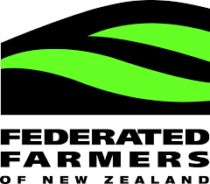The world’s soils contain 2 to 3 times more carbon than the world’s atmosphere, and have huge potential for carbon storage. The “4 per 1000” initiative, launched by France in December 2015 at COP 21, estimates that if the amount of soil organic carbon (SOC) in the top 30-40 cm of the world’s soils could be increased by just 4 parts per thousand per year, this would nearly compensate for the annual global increase in carbon dioxide in the atmosphere.
Soil scientist Dr Sam McNally at Manaaki Whenua says mineral surface area is a good indicator of how much carbon a soil can store. The best soils for carbon storage are known to have higher contents of clay – the fine particle size of clays translates to larger mineral surface area – and soils within a farm that have higher surface area could promote carbon storage.

Digital soil map of mineral surface area across Lincoln University Dairy Farm.
However, determining the best places to store carbon in soil requires extensive sampling and laboratory analysis on a farm.
“This is time-consuming and expensive as soil can vary over small areas” says Manaaki Whenua’s Managing Land and Water Portfolio Leader Dr John Triantafilis.
John worked with Sam to investigate various non-invasive proximal soil sensing instruments and modelling methods for mapping the mineral surface area at the 160-hectare Lincoln University Dairy Farm in Canterbury. Digital data included LiDAR, gamma-ray spectrometry and electromagnetic (EM) that were explored. The minimum number of soil samples needed to calibrate these datasets was also determined.
The resulting digital soil map showed a broad change across the farm with shallow silty Pallic soil underlain by gravels, synonymous with a small mineral surface area, to the north and larger mineral surface area Gley soils – with higher clay content – to the south where more carbon can potentially be stored. The modelling showed only one soil sample was needed every 4 hectares to enable effective calibration.
As well as mineral surface area, the team is exploring the potential to map other soil conditions using proximal sensed data, including pH (chemical), field capacity and permanent wilting point (hydrological), and carbon (biological).
While the methods being employed are preliminary, digital soil maps of condition will provide insights to farmers into how soil capability might be improved in terms of precision application of fertilisers and ameliorants, irrigation efficiency and monitoring.
Source: Manaaki Whenua/Landcare Research











